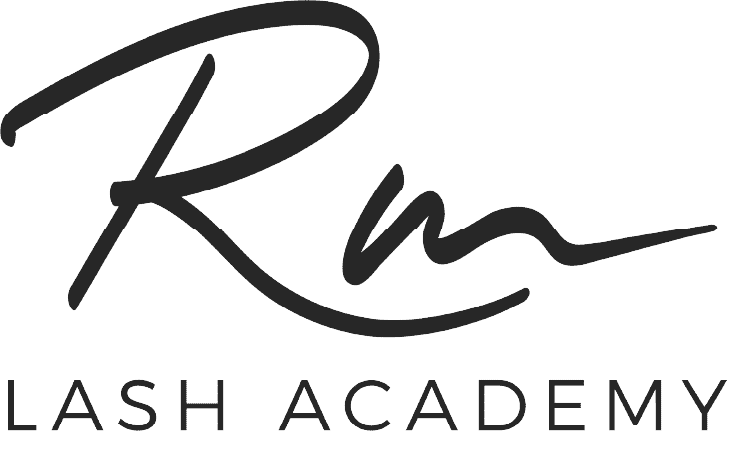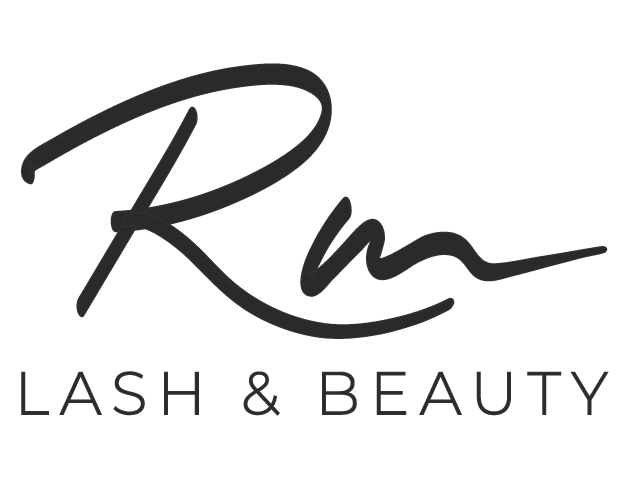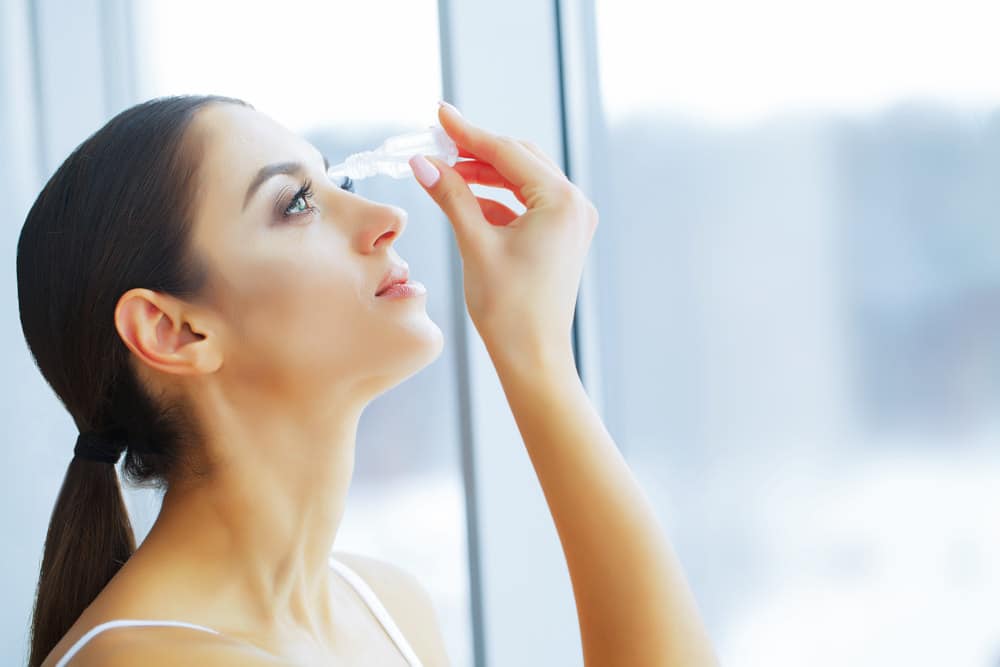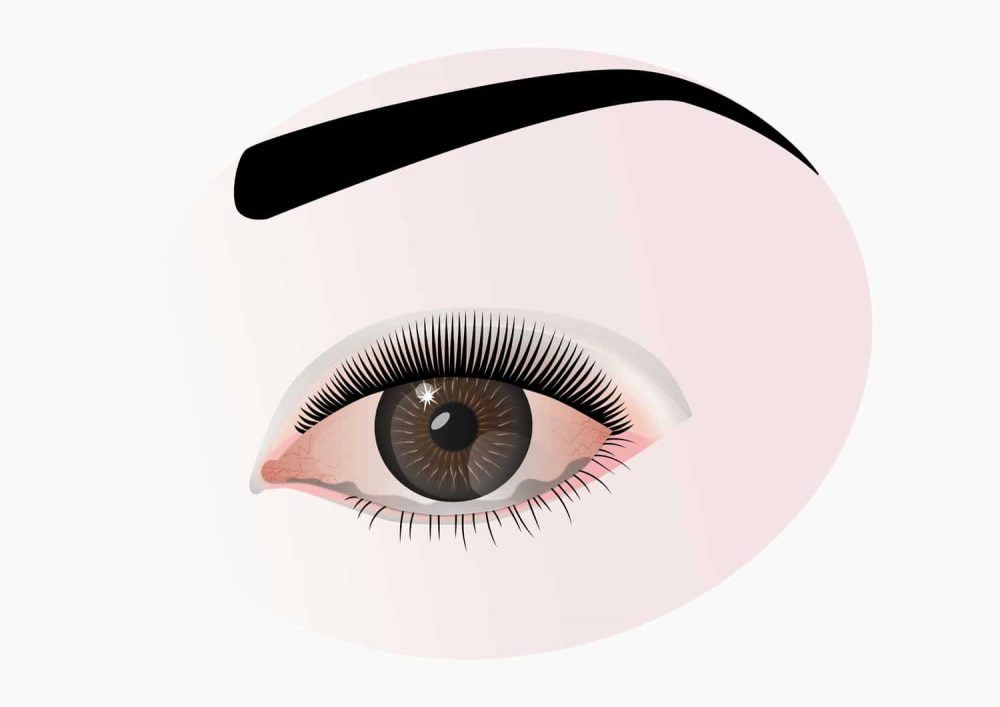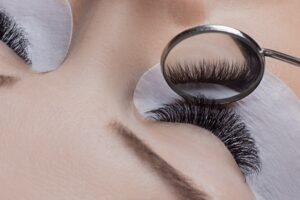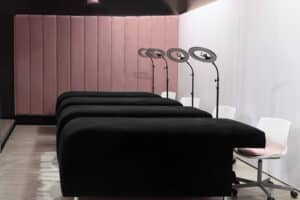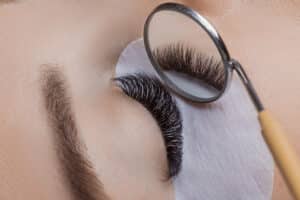We lash artists care a great deal about our clients. Not only do we want them to look and feel amazing, but we also want to protect their wellbeing too, especially when it comes to allergies.
Fortunately, allergic reactions to eyelash extension adhesive are uncommon, but they do happen. If an unfortunate event occurs, it is our responsibility as lash artists to recognise the tell-tale signs and to know how to help our clients.
Sometimes this will involve light treatment and guidance; other times, the extensions will need to be removed, followed by a trip to the doctors.
Whilst this is a horrible conversation to have with a client, it’s important that we do everything in our power to prevent a severe reaction, even if the client has received bad eyelash extensions from another technician.
What is lash extension irritation?
Lash extension irritation is typically caused by poor technique or incorrect application of the eyelash extensions. It can also occur if the client has pre-existing sensitivities that were not considered during the appointment. Symptoms of irritation include itching, redness, swelling, and tenderness around the eyes. This discomfort usually resolves within a few hours (first 24 hours) after lash extensions, as long as the proper technique was used and no other factors were present.
What is an allergy?
An allergy is a more severe reaction to the adhesive or materials used in lash extensions (such as synthetic mink lashes, Carbon-black, and Cyanoacrylate). Symptoms of an allergic reaction include excessive redness and swelling, itching, watery eyes, hives on other parts of the body, and difficulty breathing. If your client experiences any of these symptoms during their appointment, advise them to seek medical attention immediately. An allergic reaction will require immediate medical attention, as it can cause long-term damage to your client’s eyes if left untreated.
What causes eyelash extension adhesive allergies?
Whilst you can never be 100% sure which type of allergy you are facing, without further investigation, there are three main culprits that cause clients to experience allergies from eyelash extension glue.
Latex
Quite often, the client will be blissfully unaware that they have a sensitivity to latex. This is because it often builds up over time, as one is repeatedly exposed to the material.
Luckily, a latex allergy needn’t prevent anyone from enjoying eyelash extensions, as a latex-free adhesive is readily available.
Make sure that you have some in stock for anyone who comes in with a latex allergy that they’re aware of.
However, do remember to tell the client that latex-free glue will reduce the lifespan of eyelash extensions by about a week.
Carbon Black
Carbon black is the pigment in black lash glue, which makes it so dark.
Whilst black adhesive is great for blending the lash extensions into the natural lash line, some people are allergic to carbon black and will need to have their lashes applied with a clear glue instead.
Clear glue may have a slower drying time and only around a five-week retention time, but it’s needed for sensitive eyes.
Cyanoacrylate
Cyanoacrylate is the main ingredient found in lash adhesive and ensures that eyelash extensions last as long as possible.
People with a cyanoacrylate allergy sadly can’t have eyelash extensions, because there is no alternative ingredient.
Luckily, having an allergy to cyanoacrylate is rare and according to the FDA, only about 1% of the population suffer from it.
Are lash extension adhesive allergies dangerous?
On the danger scale, allergies to lash extension glue are on the lower end, but they can still cause extreme discomfort for the sufferer.
Once the lash extensions are removed, allergy symptoms should quieten down. Unfortunately, clients with an allergy to lash extension adhesive, will always experience a reaction.
Even after a long break from the treatment, it’s likely that the allergy will return, stronger than ever. Don’t forget, lash artists can also suffer from allergies to eyelash extension glue.
Being exposed to the strong fumes every day, for long periods of time can cause technicians to become allergic to the adhesive.
How to tell the difference between an allergy and irritation
First things first – you’ll be pleased to know that, often, a client may think they’re experiencing an allergy, but it’s actually just irritation.
This is good because irritation passes quickly, after which your client will be free to enjoy their lashes. You should feel confident to advise your clients on the difference between a reaction and an irritation, which will pass.
Eye irritations carry similar red flags as allergic reactions, but are less severe and usually subside after the adhesive has cured.
The irritation will only manifest itself in the form of redness, itching, and some minor swelling. Clients may also complain that their eyes are tearing-up.
If they have sensitive skin, the client may find that they experience a small reaction initially, which goes away quickly.
The irritation will usually start to occur within the first few hours after application but goes down within the first two days.
If a client is experiencing symptoms, which you think indicate mild irritation and they want to keep their extensions for a day to see if they feel better, let them do so, but check on them after 24 hours to make sure the symptoms are subsiding.
An allergy, on the other hand, is more serious and requires swift action. Clients experiencing an allergic reaction will develop swelling, noticeable redness of the eyes and the cornea, plus itchiness and watery eyes.
An allergy will become apparent within the first 48 hours after application and won’t subside. Symptoms often get worse quickly.
How to tell if a client has developed an allergic reaction
The client will often no longer be with you when they notice that their eyes are starting to feel uncomfortable.
If a client contacts you after their visit, with concerns about a reaction, there are a few questions that you can ask them to determine how serious the situation is and whether they truly have an allergy:
- Do you have any swelling or puffiness?
- If so, where is the swelling or puffiness?
- Is your eye-area itchy?
- Are your symptoms in one eye or both?
- Are you uncomfortable?
- Does your lash line feel irritated, itchy, or swollen?
- Is your eye itself irritated?
If the client answers ‘yes’ to more than two of these questions and you are concerned about their symptoms, advise them to go to an emergency doctor or the hospital as soon as possible.
If their symptoms sound mild, likely, they are just experiencing some irritation. In this case, you can reassure them and recommend some helpful ways to ease their discomfort.
How to treat an allergic reactions to eyelash extension glue
If it is clear that a client has suffered an allergic reaction to eyelash extension, as much as you will want to help them, remember that you are not a doctor.
As licensed professionals, we can only help by providing reassurance and advising how to treat mild discomfort and reactions. In the case of severe symptoms, that persist for more than 24 hours, recommend that they visit urgent care and get medical advice.
In the case of mild symptoms, suggest that the client use a cold compress and make urgent arrangement to bring them in for consultation.
Anti-inflammatories will also help reduce the swelling.
Other methods you can recommend are:
- Use a cold compress to reduce discomfort and swelling (eye pads may better if they are trying to keep the lashes).
- Use a camomile tea compress.
- Get medical advice
Why should you seek advice from a doctor before removing your lashes?
You will need to act quickly and calmly, whilst gently keeping the client informed and reassured.
Here’s what to do:
- Get advice from a doctor.
- Remove the lash extensions only with doctors advice. Use a cream glue remover, which will be more suitable for sensitive clients.
- To prevent irritating the skin more, avoid accidentally brushing the eyelids with the remover.
- Once you have successfully removed the extensions, give the client’s natural lashes a thorough clean using a lash wash and cleaning brush.
- Advise your client to see a doctor, to make sure their eyes are okay.
- How to treat irritation caused by eyelash extension glue
- If, whilst you are working on a client their eyes become irritated, there are ways that you can relieve discomfort, without having to remove the lashes.
- Check that you haven’t accidently spilt lash glue on your client’s skin. Even the tiniest drop can cause irritation. If you spot any, wipe it away immediately.
- Get a nano mister. This is an electronic tool which you can use to spray your clients’ eyelash extensions with a small amount of water. This will help the glue set faster and reduce irritation.
- It’s also a good idea to invest in a handheld fan, which you can use on the lashes after spraying them with the nano mister. It’ll speed up drying time and lower the intensity of glue fumes.
- Once the irritation has settled down, switch to using a hypoallergenic glue. This type of glue does not contain latex or carbon black, so will decrease the chance of your client’s eyes becoming irritated.
How to minimise the chance of irritation and reaction
- Only apply lashes in a well-ventilated room.
- Keep your work area clean and tools sanitised.
- Know your products and their ingredients well.
- Place a jar of an anti-allergy gel by your work station. This clever invention catches the glue fumes and cyanoacrylate before it reaches a client’s eyes and nostrils.
- Ask client’s questions about their previous experiences with lash extensions and any current health issues they may have.
- Pre-cleanse the eyes with a saline solution instead of a primer.
- Check that the glues that you have in stock are in date.
- Stock glues that are suitable for sensitive eyes.
- Use a fan to disperse fumes away from clients’ eyes.
- Use a nano mister for quick curing.
- Fully explain aftercare to the client.
- Always do a small patch test in your consultations, even if the client says they’ve had extensions before.
- Always ask new clients to sign a release form that explains the risks of eyelash extensions.
Above all, remember that lash glue allergies are rare! The majority of the time, your clients will have an irritation-free experience, but preparing yourself for the few times when you need to act fast, will help you show up to work every day with confidence.
If you’d like to learn more from us, you can read more on our blog, learn how to run consultations your customers will rave about, or find out about our eyelash extension courses.
